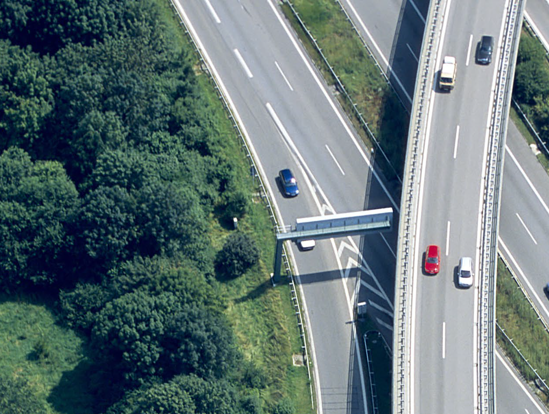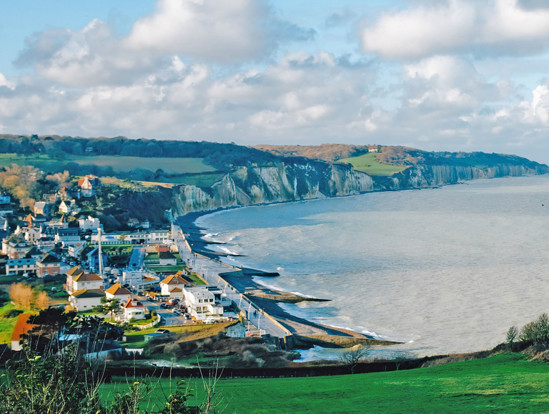Foreword

Tina McKenzie MBE
FSB Policy and Advocacy Chair
Our much-loved high streets have long been part of the cultural fabric of the UK. They are not just a vital part of our local economy and a major source of employment, but are at the heart of our communities; places where we meet, socialise, shop and build relationships. They have seen dramatic change over the decades, with the growth of chain stores, the introduction of out-of-town retail and supermarkets and the arrival of the internet all making their mark. High streets have evolved and will continue to do so, adapting to current challenges and our future needs.
From the local greengrocer who has been selling fruit and veg for decades, to the new fitness centre that has just opened its doors - these small firms make our high streets and town centres what they are. They create and nurture a flourishing environment by building close relationships with local people, organisations and other businesses.
Small businesses rely on footfall to not only survive, but thrive, and changes in consumer behaviour and pressure on the public’s purse strings have all added to the challenges. With empty units blighting many town centres across the country, the outlook can sometimes look bleak, with business rates, parking charges, the planning system and rent all having an impact on the business community.
We are at a crucial juncture for the future of our high streets. Forward-looking and robust policy interventions are needed to not only help small firms grow and be successful, but also anticipate what they will need to sustain themselves and adapt to a rapidly changing world.
Not all high streets are the same, yet all should be given support to evolve and transform. They should be supported to grow into destinations that people choose to visit, providing visitors with an enjoyable experience. They must be accessible to all and convenient, as well as being somewhere that nurtures businesses so they can be competitive.Technology undoubtedly has its place helping the high street develop. Many small firms already use a mix of online and bricks and mortar premises, and we need to look at ways to ensure this relationship is strengthened as tech develops.
There has been little conversation about how we encourage young people to invest in our high streets, not just as consumers but as business owners. The speed it takes to build an online business and engage with customers means many younger entrepreneurs are launching and making sales on social media. These creators often want to be on their local high street, and we need to make sure the next generation is supported to easily make the transition from online to offline.
We need to look to the future, making sure self-sustaining high streets remain resilient and adaptable, supporting a thriving community of small businesses and remaining a source of pride and positivity in our communities.Infographics




Executive Summary
UK high streets stand on the cusp of a transformative era. This report is a call to action, setting forth a bold vision for the next generation high street — a vision where small businesses can be the driving force behind a thriving, dynamic, and inclusive future. In the digital age, the increasing convergence of physical and online marketplaces present unprecedented challenges and opportunities. It is imperative that small businesses are supported to navigate this terrain, ensuring they can compete and succeed in both realms. The future of our high streets depends on their ability to adapt, innovate, and thrive in an ever-evolving commercial landscape.
Despite the seismic shifts towards online and out-of-town shopping, in many cases accelerated or cemented by the pandemic, independent small businesses continue to make the leap of opening on high streets and remain a cornerstone of our local economies.
This report is about anticipating what is needed in the future to support the next stage of the evolution, delving into five themes that are central to our ever-changing high streets.
Destination
High streets are more than just commercial spaces; they are destinations in their own right with the potential to attract tourism, enriching local economies. They can also identify opportunities to carve out their specialities – whether it be a certain type of retail, or an offer to commuters during the week; or providing shops and experiences for family days out on weekends.
The unique identity of each high street is its greatest asset, and fostering this distinctiveness is crucial for their long-term survival. Many small business owners say that a diverse offering of independent businesses is vital for their sustainability. By diversifying the experience - in response to changing consumer behaviours - we can create inclusive environments that continue to appeal to a broad spectrum of people.
Transformation
Each high street is unique, with some already thriving under current economic and consumer trends, while others lag behind. However, all must evolve to meet the demands of the future and provide a supportive environment for the next generation of entrepreneurs. Strategies to revitalise high streets include transforming vacant units into vibrant popup spaces for small businesses to test new concepts and reforming the planning system to recognise them as focal points for change. Investment through levelling up and the UK Shared Prosperity Fund (UKSPF) must be strategically deployed to support this revitalisation.
The shift to online shopping is not a zero-sum game. High street small businesses are already leveraging digital platforms to enhance their reach and must be supported to further integrate their physical presence with the online world. This includes aiding businesses in developing their websites and promoting both their products and the high street experience online.
A policy revolution is needed to enable high streets to employ smart technologies that not only showcase their offerings in the digital realm but also attract both real and virtual footfall, creating a seamless integration of the physical and online shopping experience.
Experience
The perception and experience of high streets by both businesses and consumers are fundamental to their growth and endurance. Accessibility, functionality, safety, and cleanliness are paramount, as is minimising disruptions. Local authorities play a pivotal role in this. Reaching the full potential of local authorities, business groups and development organisations such as Business Improvement Districts (BIDs) requires that engagement is increased and deepened. It also requires those with the power and resources to transform high streets take action based on this engagement.
The high street of the future must be a place that is not only easy to access but also one that customers eagerly anticipate visiting. It should offer an experience that makes it easy to travel to and visit, but importantly can be a place where visitors’ needs are meaningfully understood and provided for.
Infrastructure
Ensuring the long-term success of high streets and town centres requires a focus on accessibility and convenience. Cheaper and more accessible parking options, improved bus transport links, and the incorporation of forward-thinking infrastructure, such as high-quality electric vehicle (EV) charging hubs, can play a vital role in increasing footfall, supporting small businesses, and creating a thriving ecosystem for communities. Small businesses see better approaches to transport as a key opportunity. By prioritising these factors, local authorities can encourage more people to visit, shop, and invest in their local high streets.
Competitiveness
For UK high streets to continue to succeed and be self-sustaining in the long term, small businesses require strategic support so they can continue to drive our local economies. In particular, the business rates system must be balanced to ensure fair competition among high street, out-of-town, and online retailers. Expansion of Small Business Rates Relief (SBRR) must form part of future high street reforms.
The future of payment systems is also critical, with small businesses needing to adopt new digital payment methods while maintaining access to cash transactions that serve vulnerable communities. A long-term strategic vision is necessary to maintain the competitiveness of small businesses, ensuring that operating costs and employment remain sustainable.
Download the full report below




